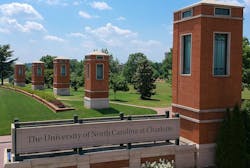It wasn’t long ago that my editorial director asked how long I could keep producing these articles on active shooter events. My response was, “As long as they keep happening… and I really wish I ran out of material tomorrow.” I wanted to take a moment to comment on this: It’s a shame that our society continues to deal with these attacks. Throughout my study of the events and the ever-evolving response protocols required, three things become obvious and seem to be common to the large majority of these events. Keep that in mind: These are the three things that, if we could just fix them, we could eliminate the majority of these shooting.
Thing 1: In nearly every instance the perpetrator(s) feel bullied, insulted, isolated, etc. There has to be some way to reach these people – children, adolescents and adults – before they “snap” and go on these shooting sprees. Bear in mind that “snap” doesn’t mean they suddenly grab a gun and go. There are some indications that Cho planned his attack at Virginia Tech for up to a year before he executed it. That brings me to…
Thing 2: So many of these attacks are known about beforehand. Sometimes it’s only a few hours before and sometimes it’s weeks before, but there is often some forewarning. So why do they still occur? All too often people tend to ignore the warning signs, or the outright threats, or – in one case – they join the original shooter and enlarge the plan of attack.
Thing 3: In almost every instance, after the fact, some politicians clamor for more gun control laws while utterly ignoring the link to bullying and mental or emotional instability that is documented in the investigative process. Of course, politicians often aren’t actually trying to solve the problem(s) but are merely trying to garner votes through vicarious sympathy. If, instead of trying to take guns, they would bridge the gap between mental health reporting and background checks, many of these attackers would have been prevented from getting weapons in the first place.
Now… with that out of the way, let’s take a look at the events of April 30th, this year, at the University of North Carolina at Charlotte. It was past the end of the work day (5:40pm) on the last day of classes for the semester when Trystan A. Terrell took a handgun into one room and began firing randomly. No reports indicate that he was specifically targeting anyone – and that’s probably a good thing. In most active shooter events where the shooter has clear intent and specific targets, the casualty counts tend to be higher. In this case, Terrell shot six people, two of whom died.
One of the events in this particular shooting that has to be called out is how it was stopped: Although 9-1-1 was called with relative quickness after the attack started, the attack was ended by a student before the emergency call was ever made. A student named Riley Howell was hailed as a hero in stopping the attack. Reports say that he tackled Terrell – and did so with such energy that Terrell later complained of potential internal injuries. Terrell shot Howell three times, the last time in the head, killing him. This intervention by Howell stopped Terrell from firing anymore shots at other students and, after having emptied the weapon, Howell reportedly just sat and waited for the police to arrive. This is an odd / different course of action for an active shooter given that reports indicate Terrell had more loaded magazines available in a backpack.
Given that there were only (and yes, it’s sad to say “only” here because ONE is too many) two fatalities, and one of them was the Hero Howell, that means that thanks to Howell’s actions only one other student lost their life. Three other students were seriously wounded but survived and a fourth student received non-life-threatening injuries. It cannot be stressed enough that immediate intervention limits casualties – both injury and fatal.
Post incident investigation revealed a few different characteristics about Terrell from the “usual” active shooter. As far as the investigators could find out he had no prior criminal history, and certainly none of violence or threat thereof. Although only 22-years old, he had limited involvement in the social media realm and was reportedly very intelligent and motivated having taught himself two foreign languages in pursuit of his dreams to work overseas. Although some relatives intimated that Terrell may have been autistic, such didn’t appear to impact his involvement or relationships with his student peers face to face. Terrell reportedly confessed to the attack and claimed he’d been planning it for months. It’s difficult to conceive how he could have been planning for months and no one else was aware of it. The planning and research stage is easily one of the hardest things to keep hidden when an active shooter is gearing up for an attack.
Enough emphasis can’t be placed on the actions of Hero Howell and the need for an immediate defensive response to an active shooter event. Yes, there is extreme risk in fighting back but there’s almost assured death if you fail to respond at all. A coordinated (or even uncoordinated) counter-attack would limit casualties and prevent higher fatality counts. We, as a society, must re-embrace this outlook.

Joshua Borelli
Joshua Borelli has been studying active shooter and mass attack events over the course of the past several years, commensurate with receiving training on response and recovery to natural disasters and civil disturbances. Joshua started to outline this series of articles in an attempt to identify commonalities and logistical needs patterns for response.



